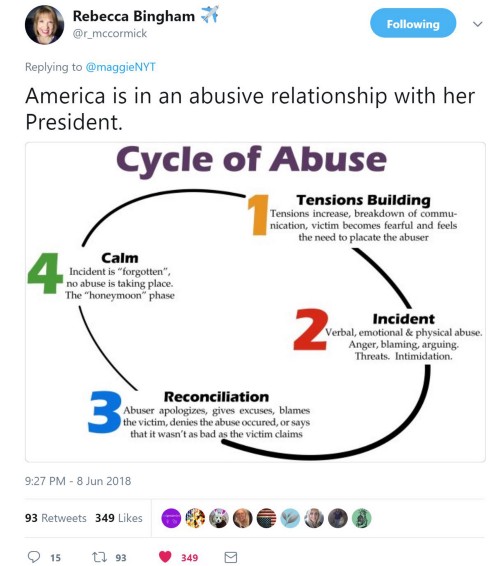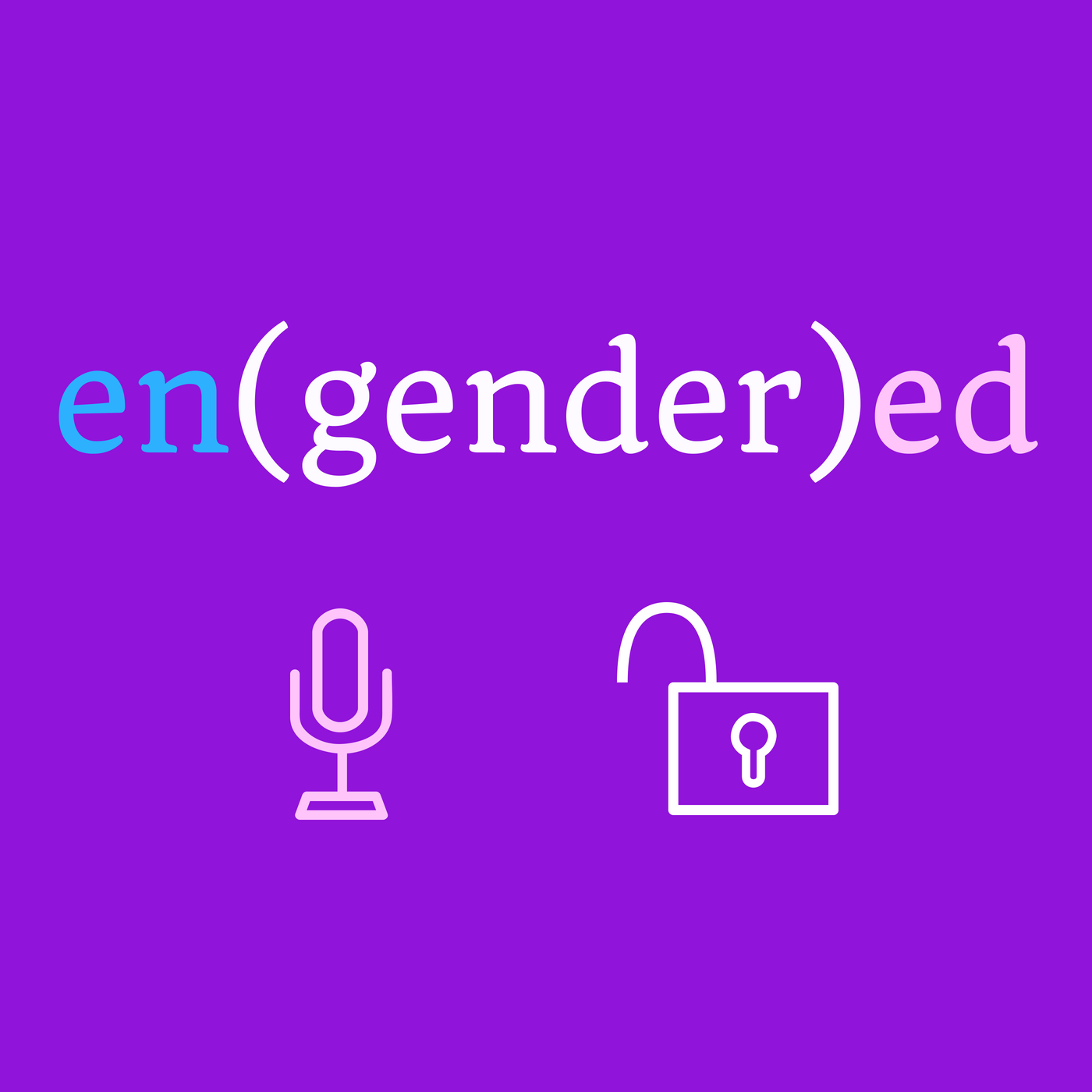
 When I woke up this morning, I found this great tweet that summed it up perfectly — America is in an abusive relationship with her ‘president.’ I’ve been saying this since the election.
When I woke up this morning, I found this great tweet that summed it up perfectly — America is in an abusive relationship with her ‘president.’ I’ve been saying this since the election.
I’m sure we can all remember what we were doing that night — November 8, 2016 — and how we felt the next morning. For me, that grim night, when I finally went to bed, I could barely hold back my tears. The next morning I could barely keep my eyes open or stand up straight. I kept praying that it was all a nightmare and when I woke up, the world would no longer be upside down again.
The heaviness and physical weight I felt from reacting to the news of this sexual predator, bully and abuser taking such a position of power was shared by so many of us who are survivors of domestic violence and coercive control. Beyond the endless ways in which I could see his policies and political and judicial appointments doing damage to to our democracy and valued institutions, likely to have decades-long impact and require many decades more of work to undo, there was a bigger fear. My heart cried out for the boys our country would raise, who would see this man as their role model. Unquestioning in their dutifulness, they would grow into men who would parrot his words, his attitudes, and his behaviors. Trump will usher in a generation of bullies, rapists and abusers, I thought to myself. That will be his most damaging legacy.
My only source of comfort was the possibility and hope that now everybody would understand what it felt like to be in an abusive relationship. His efforts to dominate, control and convince you and really, everyone, of his narrative is incessant and exhausting. Those of us who call ourselves progressives and in Twittersphere as part of #theresistance, feel it in our bodies, every minute of every day when we are reading and tweeting as a form of life sustenance and as an act of defiance and hope. That is what being in an abusive relationship feels like.
He will try to convince you and others that his narrative is the ‘truth,’ no matter what the facts are that you offer to dispute them and no matter how many people disbelieve him. I think we’ve all heard enough about the 2017 Inauguration crowd size comparison to know that this form of mind-control and historical revisionism is an assault to our senses and to our souls. Hard to believe that there are actually people out there who believe that his crowd and attendance was larger than President Obama’s, but there are — more than 60 million of us who voted for him, and apparently a good number of us still support him.
Trump is giving us all a lesson on abuse. Gaslighting 101, Coercive Control 101, Institutional Abuse 101. “Alternative facts” is the first example. It’s always Hillary’s fault or Obama’s and never his. That’s the divide and conquer and isolate strategy. That last one — institutional abuse — is when individuals working in the system, like therapists, attorneys, social workers, judges and other people who work in high-stakes institutions are manipulated, often by the abuser, but also through their own implicit biases, to disbelieve that you and/or your children are being abused, and they refuse to protect you. Many times their actions end up putting you in greater danger and harm. Too offten, these ‘help-workers’ actually retaliate against you for speaking your truth.
This is not unlike what Kelly Anne Conway, Fox News and its band of enablers, and the white women who vehemently defended Roy Moore and voted for him, are doing to us as citizens of this diminishing democracy — every minute of every day. It’s like having a personal terrorist in your life who won’t let you be free. They try to break down your spirit until you cry mercy and give up — surrender to them. Perhaps now, people will be more empathetic the next time an abuse victim in their lives comes to them for help. Instead of asking “Why did you stay?” they can ask instead, “What institutions and individuals are complicit with enabling and permitting the abuser to continue to abuse, and what can we do about it?” That would be a great first step.

